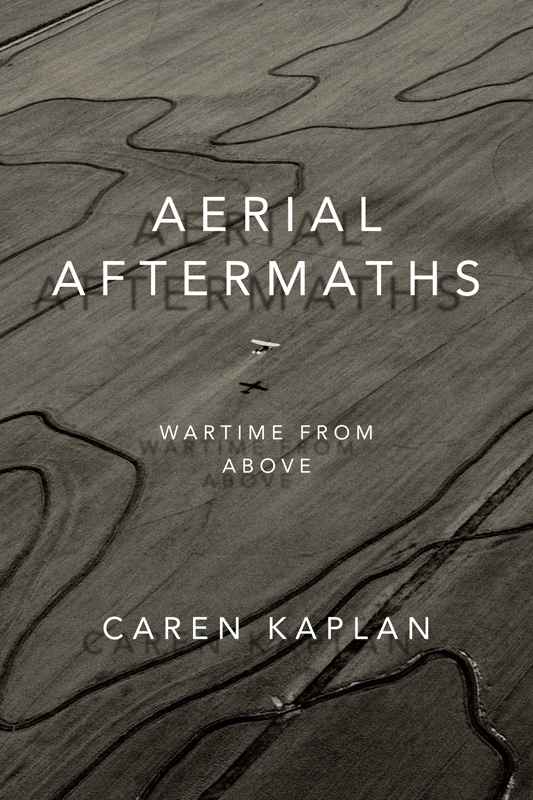Caren Kaplan: Aerial Aftermaths: Wartime from Above (2018)
Filed under book | Tags: · aesthetics, air, cartography, colonialism, geography, history of photography, infrastructure, knowledge, landscape, mapping, military, nature, panorama, photography, power, space, technology, war

“From the first vistas provided by flight in balloons in the eighteenth century to the most recent sensing operations performed by military drones, the history of aerial imagery has marked the transformation of how people perceived their world, better understood their past, and imagined their future. In Aerial Aftermaths Caren Kaplan traces this cultural history, showing how aerial views operate as a form of world-making tied to the times and places of war. Kaplan’s investigation of the aerial arts of war—painting, photography, and digital imaging—range from England’s surveys of Scotland following the defeat of the 1746 Jacobite rebellion and early twentieth-century photographic mapping of Iraq to images taken in the immediate aftermath of 9/11. Throughout, Kaplan foregrounds aerial imagery’s importance to modern visual culture and its ability to enforce colonial power, demonstrating both the destructive force and the potential for political connection that come with viewing from above.”
Publisher Duke University Press, Durham, 2018
Next Wave: New Directions in Women’s Studies series
ISBN 9780822370086, 0822370085
xiv+298 pages
via André
Renzo Dubbini: Geography of the Gaze: Urban and Rural Vision in Early Modern Europe (1994/2002)
Filed under book | Tags: · 1600s, 1700s, 1800s, architecture, art history, cartography, diorama, image, landscape, mapping, panorama, topography, vision

Geography of the Gaze offers a new history and theory of how the way we look at things influences what we see. Focusing on Western Europe from the seventeenth to nineteenth centuries, Renzo Dubbini shows how developments in science, art, mapping, and visual epistemology affected the ways natural and artificial landscapes were perceived and portrayed.
He begins with the idea of the “view,” explaining its role in the invention of landscape painting and in the definition of landscape as a cultural space. Among other topics, Dubbini explores how the descriptive and pictorial techniques used in mariners’ charts, view-oriented atlases, military cartography, and garden design were linked to the proliferation of highly realistic paintings of landscapes and city scenes; how the “picturesque” system for defining and composing landscapes affected not just art but also archaeology and engineering; and how the everchanging modern cityscapes inspired new ways of seeing and representing the urban scene in Impressionist painting, photography, and stereoscopy. A marvelous history of viewing, Geography of the Gaze will interest everyone from scientists to artists.
Originally published as Geografie dello sguardo: Visione e paesaggio in età moderna, Giulio Einaudi, Torino, 1994
Translated by Lydia G. Cochrane
Publisher University of Chicago Press, 2002
ISBN 0226167372, 9780226167374
251 pages

